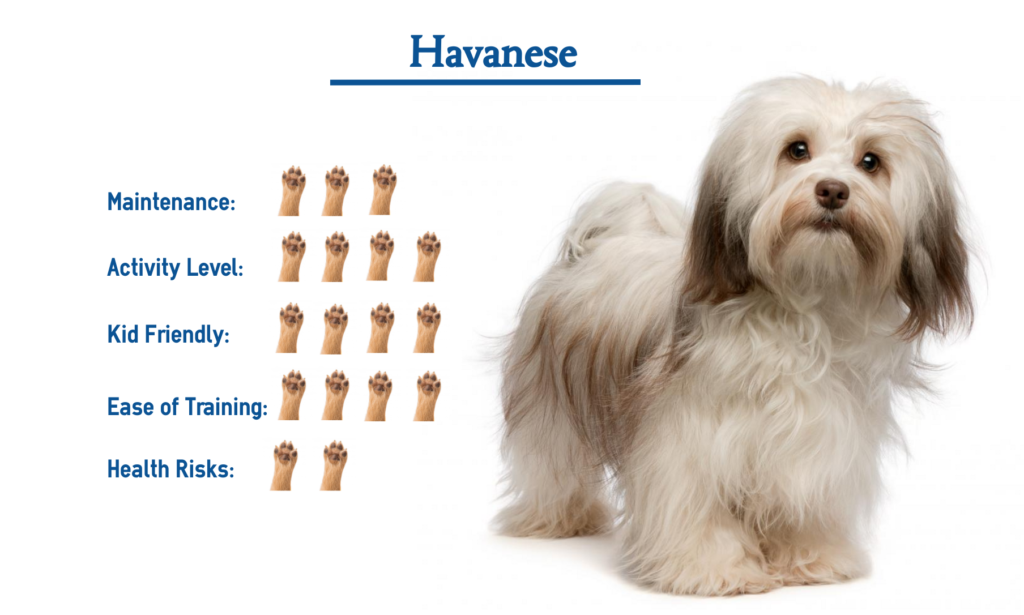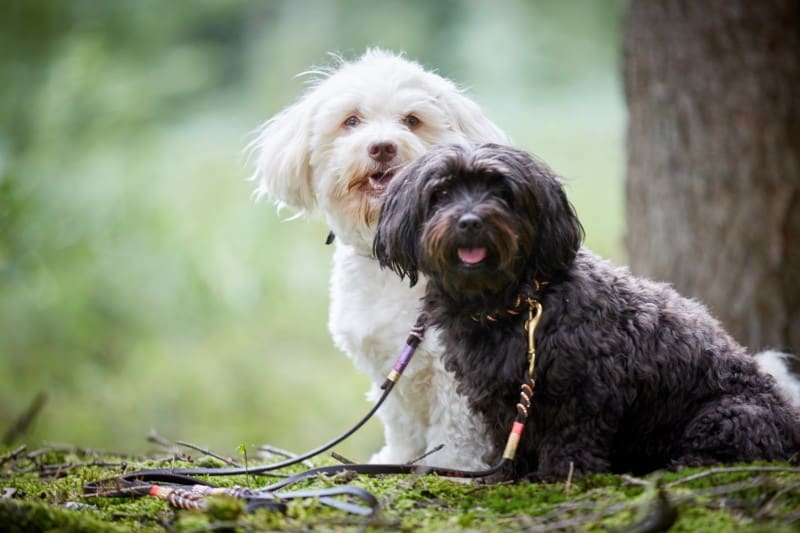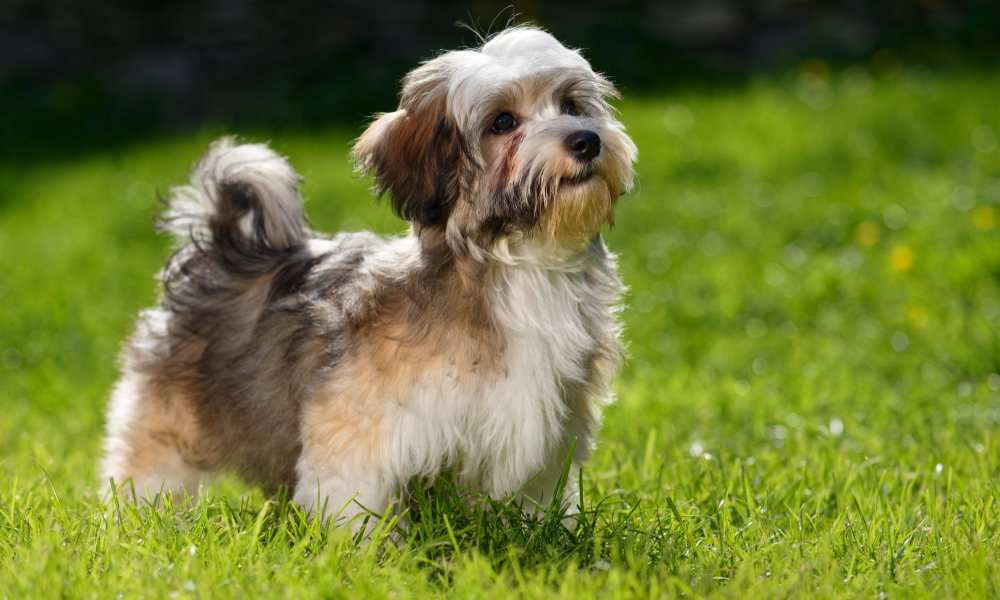Other names: Havanese Cuban Bichon, Bichón Havanés, Havaneser, Havanezer, Bichon Habanero.
Havanese (a bichon type dog) is the national dog of Cuba, developed from the now extinct Blanquito de la Habana (“little white dog of Havana”). The Blanquito descended from the also now-extinct Bichón Tenerife. It is believed that the Blanquito was eventually cross-bred with other Bichon types, including the poodle, to create what is now known as the Havanese. Sometimes referred to as “Havana Silk Dogs”, this was originally another name for the Blanquito de la Habana.
The Havanese is small in size and sturdy in structure with a tail carried over its back and ears that drop and fold. The coat is abundant, long, and silky, and comes in all colours. The Havanese has a spirited personality and a curious disposition and is notable for its springy gait, a characteristic that distinguishes the breed from all others. The Havanese is considered an ideal family pet and a true companion dog. They are highly adaptable to almost any environment. Because of their strong social needs, Havanese will not thrive in an environment where they are isolated for several hours each day.
History

The Havanese is a member of the Bichon family of dogs. The progenitors of the breed are believed to have come from Tenerife. Ship manifests from Tenerife bound for Cuba list dogs as passengers brought aboard, and these dogs were most probably the dog of Tenerife. Some believe the entire bichon family of dogs can be traced back to the Tenerife dog, while others theorize that the origins are in Malta, citing the writings of Aristotle, and other historical evidence of the early presence of such dogs in Malta. Whatever the actual origins of bichon dogs, these little dogs soon became devoted companions to the Spanish colonists in Cuba and were highly admired by the nobility.
As part of the Cuban Revolution, upper-class Cubans fled to the United States, but few were able to bring their dogs. When American breeders became interested in this rare and charming dog in the 1970s, the US gene pool was only 11 dogs.
With dedicated breeding and the acquisition of some new dogs internationally, the Havanese has made a huge comeback and is one of the fastest-growing breeds of dogs.
Havana Silk

The modern Havana Silk Dog is derived solely from recent Havanese dogs. Breeders have sought to re-create older depictions of the breed based on paintings, sculptures, and written descriptions. Compared to some Havanese, breeders seek to give the Havana Silk longer, straighter forelegs, a flatter, silkier coat, a longer muzzle, and smaller ears.
After 10 years of attempting to convince Havanese breeders to breed away from osteochondrodysplasia, many of the original leadership of the Havanese Club of America decided to leave the organization to create a breed that they feel more accurately represents the original dogs from Cuba. They began referring to their dogs as Havana Silk Dogs, claiming them to be a different breed from the Havanese.
To preserve type and sound health, Havana Silk Dog breeders do not “cross-breed” their dogs with a Havanese who is not registered as a Havana Silk Dog.
